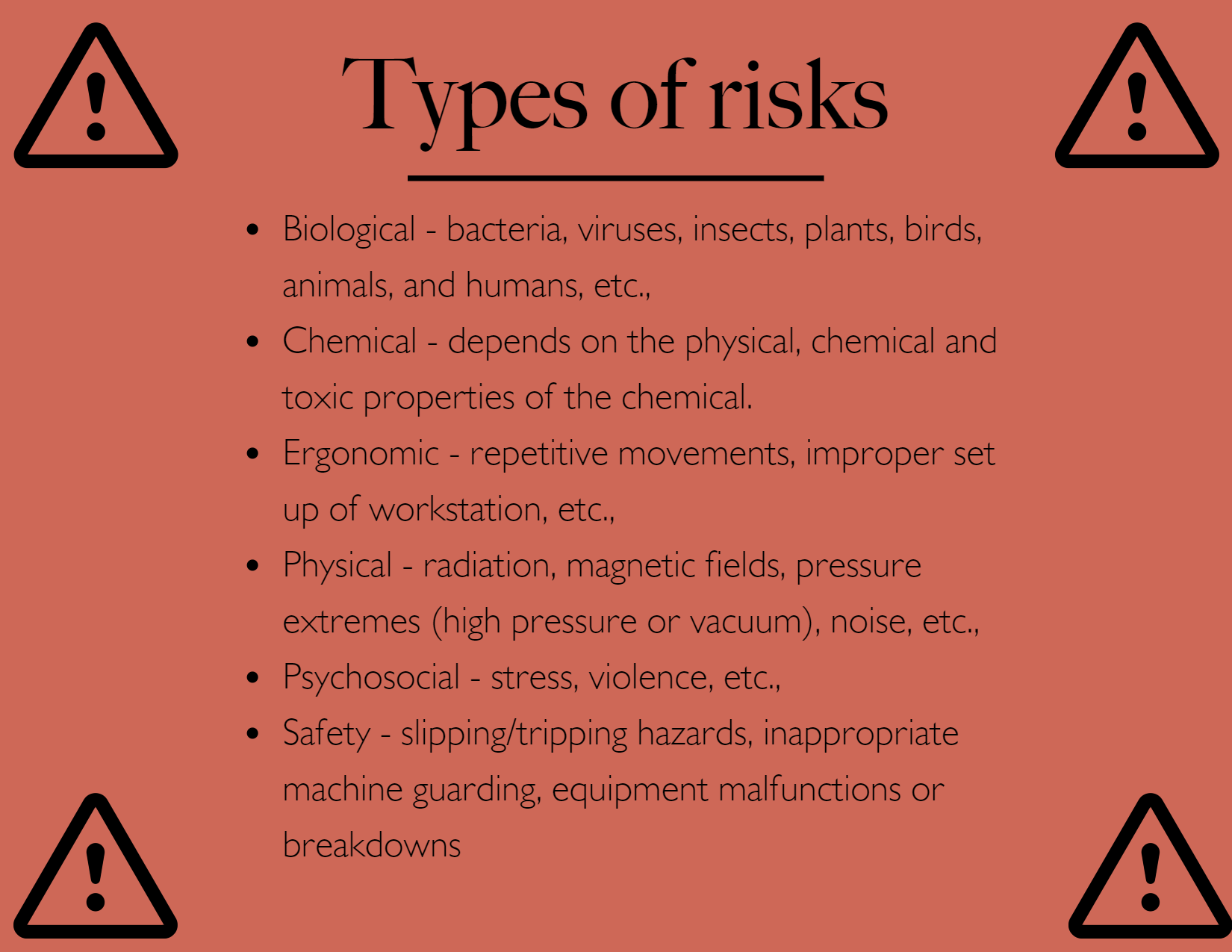Click here to view a video that explains the difference between hazard and risk.
The meaning of the word hazard can be confusing. Often dictionaries do not give specific definitions or combine them with the term "risk". For example, one dictionary defines hazard as "a danger or risk" which helps explain why many people use the terms interchangeably.
There are many definitions for hazard but the more common definition when talking about workplace health and safety is: A hazard is any source of potential damage, harm or adverse health effects on something or someone under certain conditions at work.
Basically, a hazard can cause harm or adverse effects (to individuals as health effects or to organizations as property or equipment losses).
Sometimes a hazard is referred to as being the actual harm or the health effect it caused rather than the hazard. For example, the disease tuberculosis (TB) might be called a hazard by some but in general, the TB-causing bacteria would be considered a "hazard" or "hazardous biological agent".
What are Examples of a Hazard?
Workplace hazards can come from a wide range of sources. General examples include any substance, material, process, practice, etc. that has the ability to cause harm or adverse health effect to a person under certain conditions. See Table 1 below.
|
Table 1 |
||
|
Workplace Hazard |
Example of Hazard |
Example of Harm Caused |
|
Thing |
Knife |
Cut |
|
Substance |
Benzene |
Leukemia |
|
Material |
Asbestos |
Mesothelioma |
|
Source of Energy |
Electricity |
Shock, electrocution |
|
Condition |
Wet floor |
Slips falls |
|
Process |
Welding |
Metal fume fever |
|
Practice |
Hard rock mining |
Silicosis |
What is Risk?
Risk is the chance or probability that a person will be harmed or experience an adverse health effect if exposed to a hazard. It may also apply to situations with property or equipment loss.
For example, The risk of developing cancer from smoking cigarettes could be expressed as "cigarette smokers are 12 times (for example) more likely to die of lung cancer than non-smokers". Another way of reporting risk is "a certain number, "Y", of smokers per 100,000 smokers will likely develop lung cancer" (depending on their age and how many years they have been smoking). These risks are expressed as a probability or likelihood of developing a disease or getting injured, whereas hazards refer to the possible consequences (e.g., lung cancer, emphysema and heart disease from cigarette smoking).
Factors that influence the degree of risk include:
- How much a person is exposed to a hazardous thing or condition,
- How the person is exposed (e.g., breathing in a vapour, skin contact), and
- How severe are the effects under the conditions of exposure?
What Types of Risks are There?
A common way to classify risks is by category:
